Commonly referred to as Andasibe National Park, the area comprises two, once connected but now separated due to deforestation, nature reserves: the Mantadia National Park and the Analamazaotra Special Reserve. The gateway to both is the village of Andasibe, situated 140 km east of Antananarivo. Owing to its astounding biodiversity, which includes eleven lemur species, combined with its vicinity to the capital, Andasibe is the most visited national park in Madagascar and an obvious target for every nature-loving traveler of this exotic country. Having spent Christmas in the village of Ampefy in Madagascar’s central highlands, it too became our next destination for New Year’s.
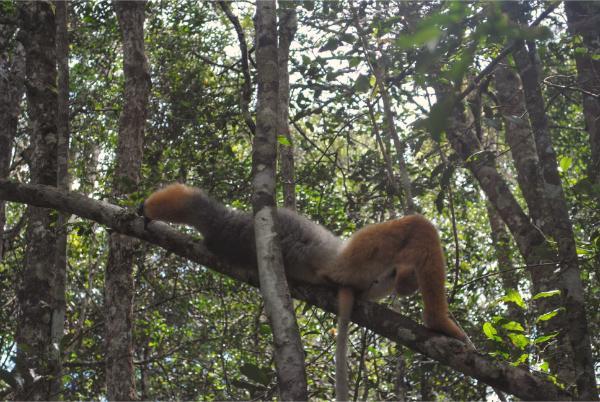
How to get to Andasibe
It is straightforward to come to Andasibe by public transport. You have to catch a taxi brousse from Antananarivo’s Ampasampito Bus Station to Moramana and from there another one directly to Andasibe. The whole trip should last somewhere about 5–6 hours and cost 14,000 ariary. You can read more detailed instructions here. For a more comfortable trip, you may also arrange a private transfer on this site. In our case, coming from further away, we had to change three buses and travel all day. We were dropped off right outside of our hotel just before sunset.
Affiliation disclosure: By purchasing goods or services via the links contained in this post, I may be earning a small commission from the seller's profit, without you being charged any extra penny. You will be thus greatly helping me to maintain and keep enriching this website. Thanks!
Where to stay in Andasibe
Out of many options, we chose to stay in Hotel Vohitsara. Situated inside the village, it had a few basic but cozy rooms on a local family’s property. The food at the restaurant was delicious, generous, and cheap. The owner spoke good English and was very friendly and accommodating. I would recommend the place hands down if you’re on a budget.
If you’re looking for more comfort, I can recommend Mantadia Lodge, where we went twice for coffee. It looked really nice and offered some great views from atop the hill.
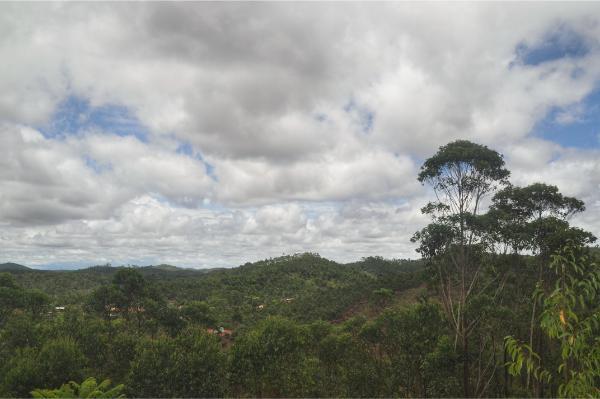
You can explore more options on the map below.
Organizing a tour to Andasibe National Park
First thing in the morning, we walked to the park’s headquarters (situated halfway between the village and the main road, coordinates: -18.9358, 48.4147) to investigate our tour options. As I already mentioned, Andasibe consists of two separate reserves: Mantadia and Analamazaotra. The main difference between them is that the former is a pristine, primary forest whereas the latter has been significantly altered by the human factor: farming, logging, and introducing foreign species such as eucalyptus and camellia. In terms of wildlife, they host pretty much the same species. The other important difference is the cost.
The entrance fee was the same for both parks: 45,000 ariary per person. For groups of up to four persons, the price of the (obligatory) guided tours started at 50,000 for 1 hour and went up to 100,000 for 4+ hours. Similarly, the tours in Mantadia ranged from 60,000 for 2 hours to 120,000 for 6 hours. But since Mantadia is located a couple of hours’ rough drive away from the village, unless you have your own car, you must factor in an additional expanse of €40 to rent a 4×4.
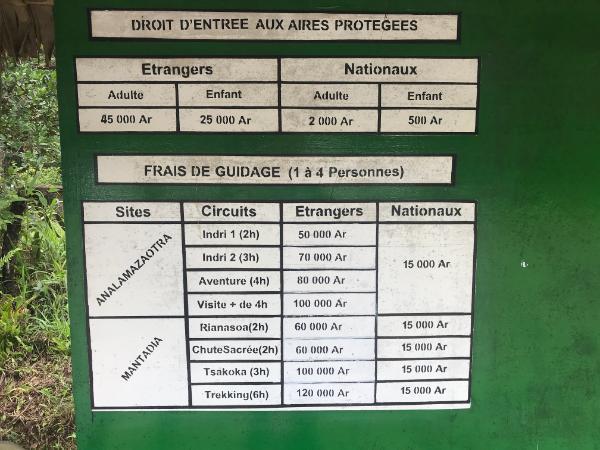
There was also a third, cheaper option. For only the entrance fee including the guide, we could go on a brief hike to the forest off the west side of the road across from Analamazaotra, where we’d arguably also see indris.
Giving it some thought, we opted for a 3-hour tour in Analamazaotra for the next morning. And we used the rest of the current day to check out the village.
Exploring Andasibe Village
Andasibe was a cute, quiet village (except for when a family from Antananarivo booked our hotel’s restaurant for a wedding and went on partying with discordant karaoke through the whole night before culminating with a wild brawl in the morning). Its main landmark is its old, picturesque train station. Walking along the railway, which was used by occasional freight trains, on either way out of the village was very pleasant. The main part of the village runs along the northern bank of the river. It features a spooky stone church and a lively market street.
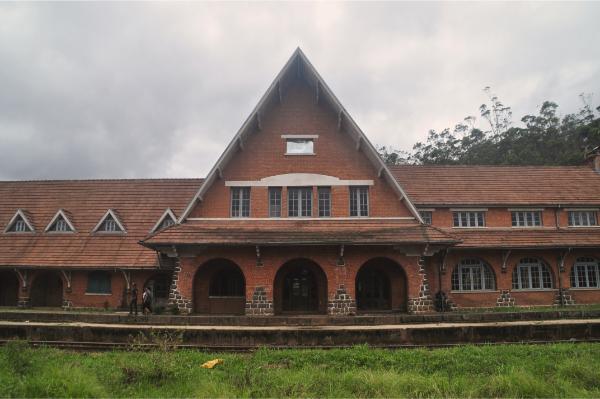
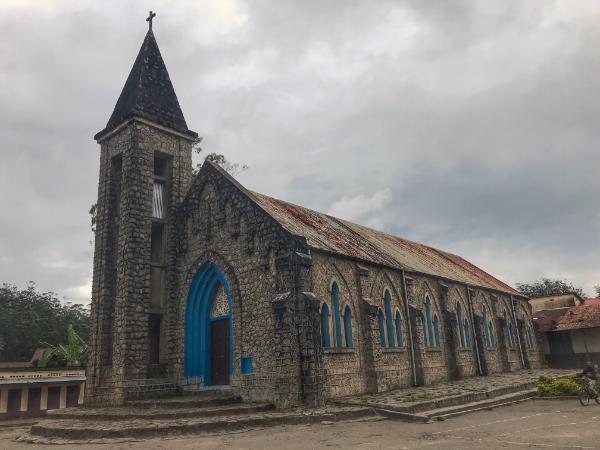
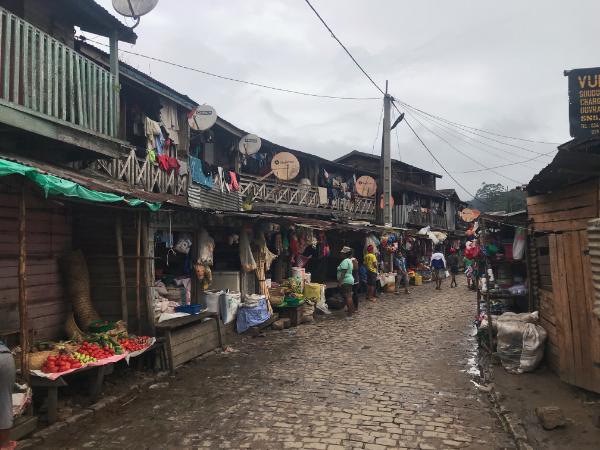
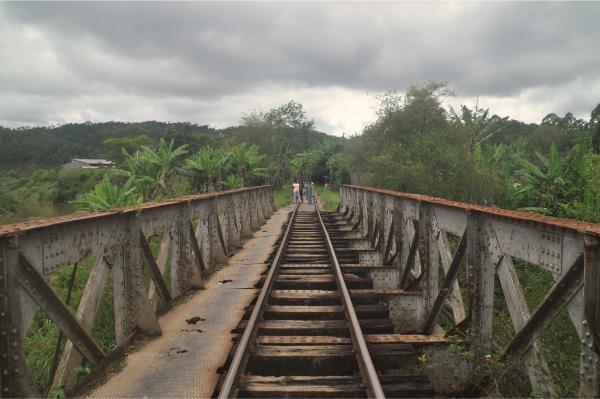

Andasibe Village Photo Gallery
View (and if you want use) all my photographs from Andasibe Village.
Analamazaotra Reserve Hike
We were back at the national park’s entrance by around 7 am, paid at the booth, were assigned an English-speaking guide, and set off hiking.
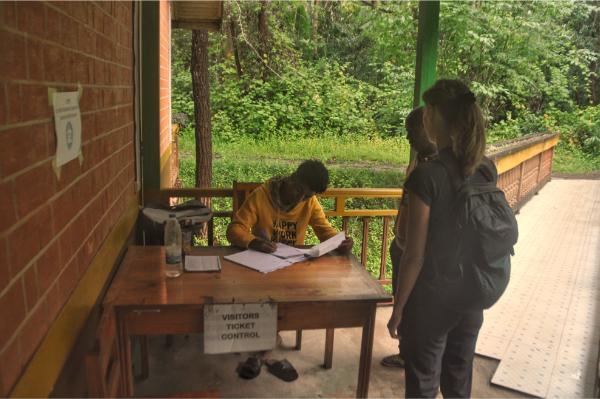
The forest itself, primary or not, was nothing short of magical: a pandemonium of green suffused by melodious bird chirps and eerie lemur calls. Flora-wise, I found particularly impressive the colossal, trunk-less pandanus plants. Frogs sheltered in the gaps of their sword-like leaves. Then we saw some enormous ant and termite mounds, various little birds fluttering swiftly through the foliage, a snake-sized millipede the color of a cherry in early ripeness… but on the whole, the tour was all about lemurs.
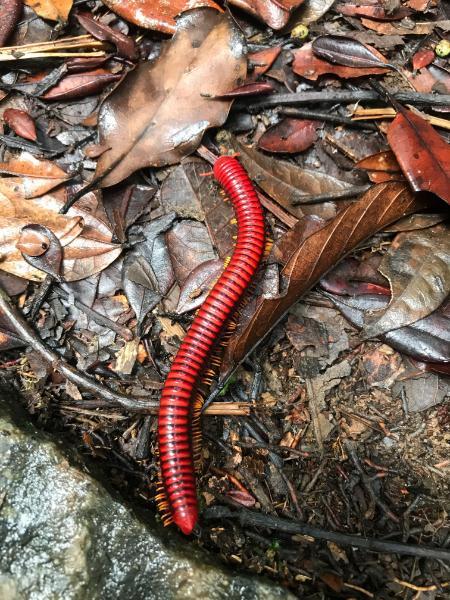
Five minutes into our hike, we encountered a group of common brown lemurs: a frugivore, polygamous species that live in groups of about a dozen individuals. We only caught some short glimpses of them before they disappeared in the foliage. We also saw another pair of them after the conclusion of our tour, crossing the road as we walked back to the village.
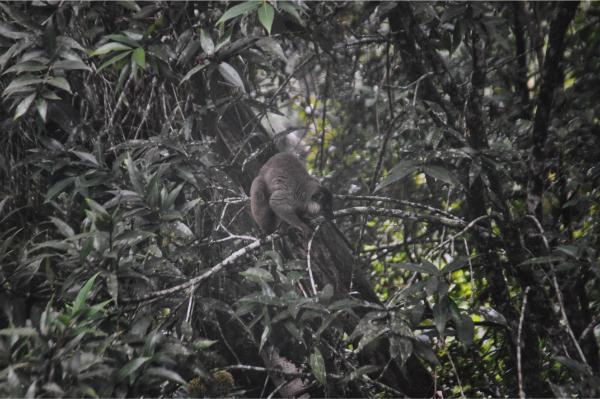
It didn’t take long before we spotted the first indris. The highlight of Andasibe, these are the largest living lemurs, reaching up to 70 cm in height and 10 kg in weight. Besides their size, they are distinguished by their almost complete lack of tail (which makes their climbing skills all the more impressive). They are monogamous and live in small family units of up to five individuals, feeding on everything vegetarian (fruit, leaves, flowers…). They are renowned for their complex, musical vocalizations.
Our first sighting of them consisted of a baby indri leaping back and forth between two trees before clinging onto his mom’s back for them to vanish together. Later, we saw another group from closer up and for longer. A mother cuddled a trunk at eye level and didn’t budge at all. Meanwhile, her three youngsters cavorted all over the place as if possessed, fighting and kicking each other in the face, often approaching us within arm’s reach.
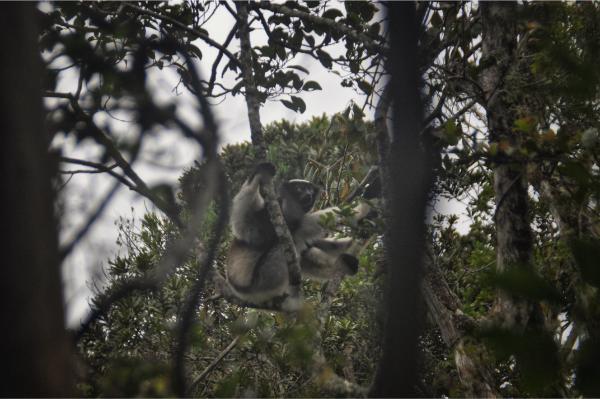
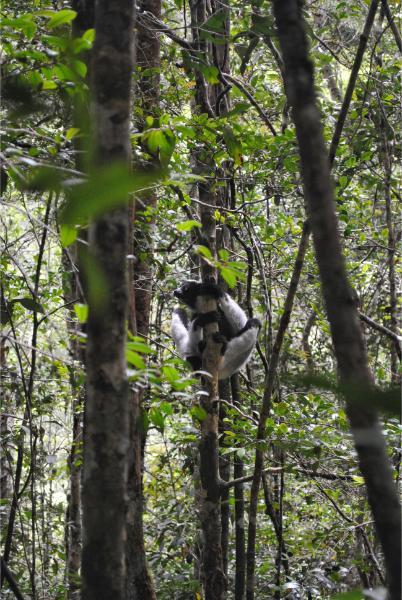
The third and last lemur species we saw in Andasibe was the diademed sifaka. Due to their vibrant yellow-orange tint and their not-very-shy behavior, I’d say these were my favorite ones from all of Madagascar. We came across a large troop of them, some ten individuals, that brachiated their way across the lower layers of the forest. We spent one hour of our three-hour hike just following them. Our presence didn’t seem to bother them. They rather seemed to revel in the spotlight, pausing to strike funny poses in front of our cameras.
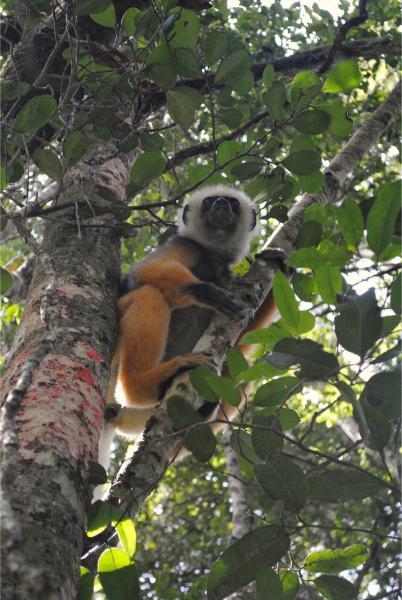
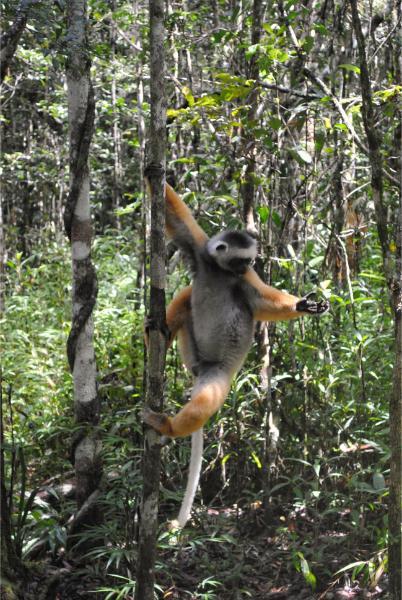
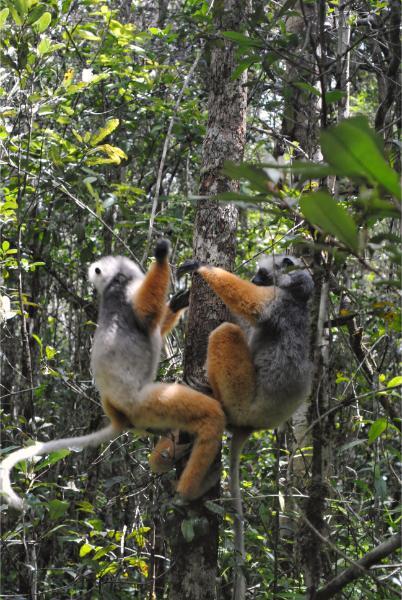
Tour done, we spent this and the next day relaxing in the village before departing for Toamasina.
Analamazaotra Reserve Photo Gallery
View (and if you want use) all my photographs from Analamazaotra Reserve.
Accommodation and Activities in Madagascar
Stay22 is a handy tool that lets you search for and compare stays and experiences across multiple platforms on the same neat, interactive map. Hover over the listings to see the details. Click on the top-right settings icon to adjust your preferences; switch between hotels, experiences, or restaurants; and activate clever map overlays displaying information like transit lines or concentrations of sights. Click on the Show List button for the listings to appear in a list format. Booking via this map, I will be earning a small cut of the platform's profit without you being charged any extra penny. You will be thus greatly helping me to maintain and keep enriching this website. Thanks!
